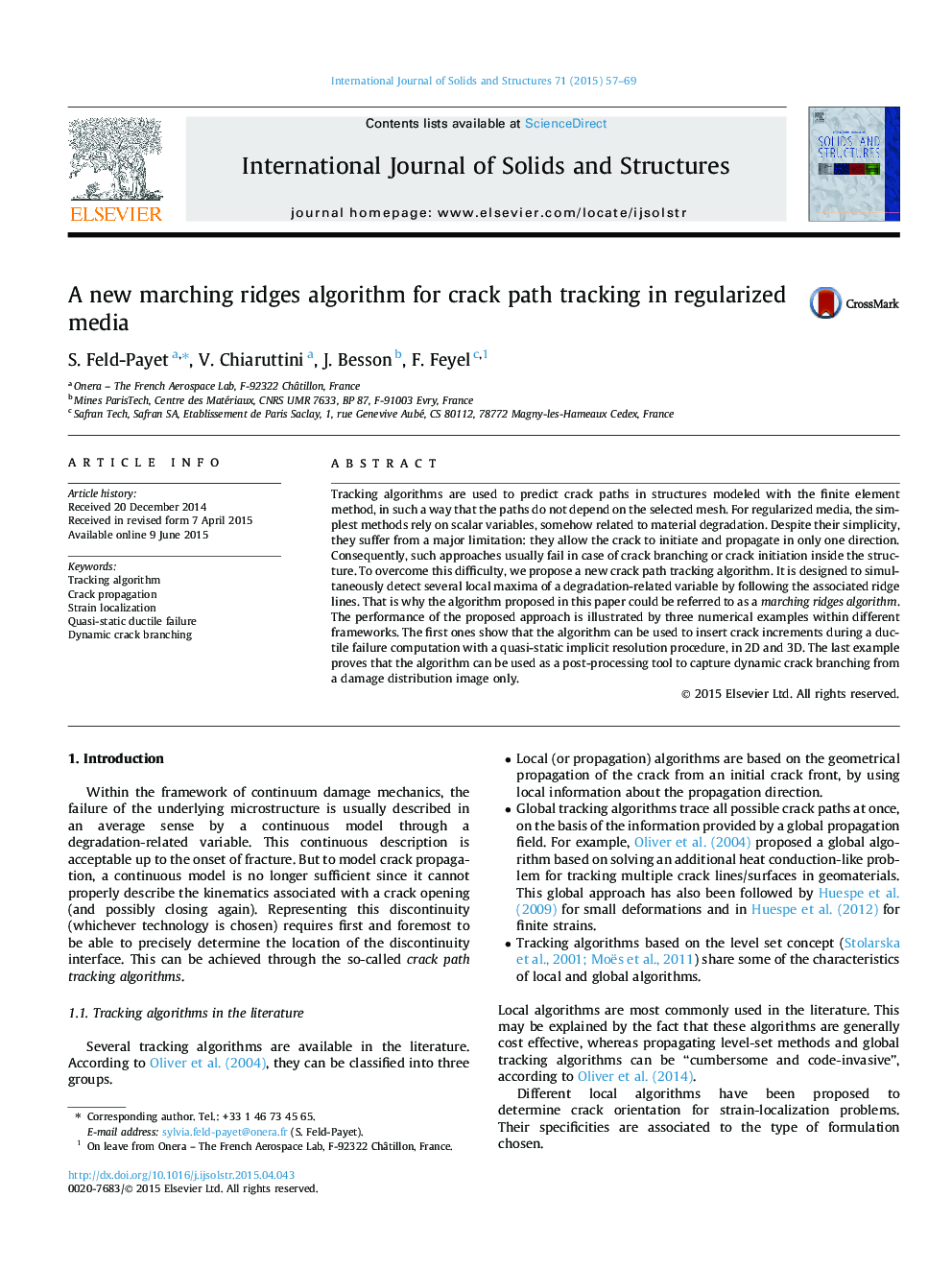| کد مقاله | کد نشریه | سال انتشار | مقاله انگلیسی | نسخه تمام متن |
|---|---|---|---|---|
| 277312 | 1430216 | 2015 | 13 صفحه PDF | دانلود رایگان |
• Ridge lines can be detected by studying the sign of a scalar product.
• The algorithm can be applied for ductile failure FE analysis in 2D and 3D.
• Classical drawbacks of orientation criteria based on weighted averages are overcome.
Tracking algorithms are used to predict crack paths in structures modeled with the finite element method, in such a way that the paths do not depend on the selected mesh. For regularized media, the simplest methods rely on scalar variables, somehow related to material degradation. Despite their simplicity, they suffer from a major limitation: they allow the crack to initiate and propagate in only one direction. Consequently, such approaches usually fail in case of crack branching or crack initiation inside the structure. To overcome this difficulty, we propose a new crack path tracking algorithm. It is designed to simultaneously detect several local maxima of a degradation-related variable by following the associated ridge lines. That is why the algorithm proposed in this paper could be referred to as a marching ridges algorithm. The performance of the proposed approach is illustrated by three numerical examples within different frameworks. The first ones show that the algorithm can be used to insert crack increments during a ductile failure computation with a quasi-static implicit resolution procedure, in 2D and 3D. The last example proves that the algorithm can be used as a post-processing tool to capture dynamic crack branching from a damage distribution image only.
Journal: International Journal of Solids and Structures - Volume 71, 1 October 2015, Pages 57–69
